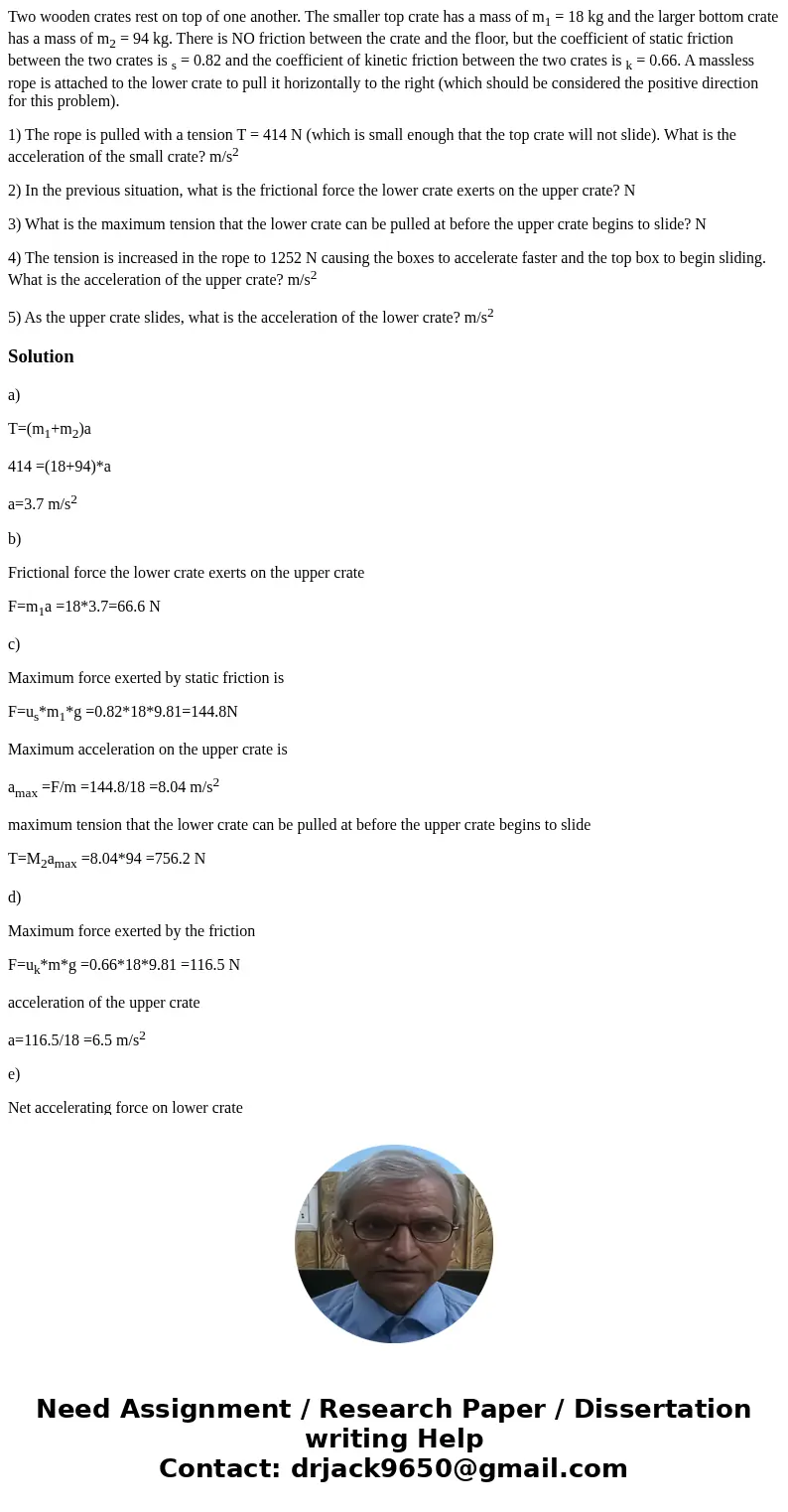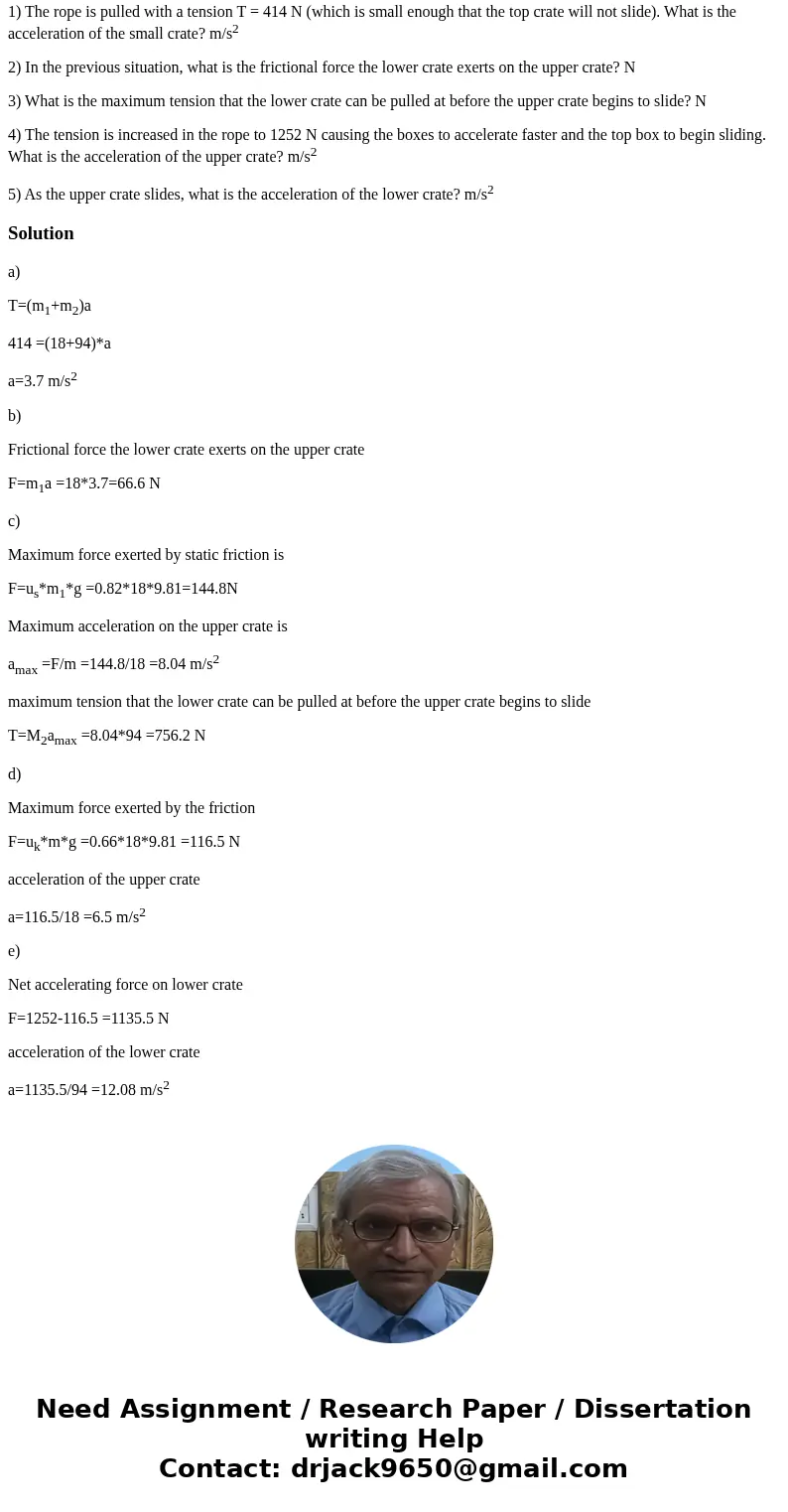Two wooden crates rest on top of one another The smaller top
Two wooden crates rest on top of one another. The smaller top crate has a mass of m1 = 18 kg and the larger bottom crate has a mass of m2 = 94 kg. There is NO friction between the crate and the floor, but the coefficient of static friction between the two crates is s = 0.82 and the coefficient of kinetic friction between the two crates is k = 0.66. A massless rope is attached to the lower crate to pull it horizontally to the right (which should be considered the positive direction for this problem).
1) The rope is pulled with a tension T = 414 N (which is small enough that the top crate will not slide). What is the acceleration of the small crate? m/s2
2) In the previous situation, what is the frictional force the lower crate exerts on the upper crate? N
3) What is the maximum tension that the lower crate can be pulled at before the upper crate begins to slide? N
4) The tension is increased in the rope to 1252 N causing the boxes to accelerate faster and the top box to begin sliding. What is the acceleration of the upper crate? m/s2
5) As the upper crate slides, what is the acceleration of the lower crate? m/s2
Solution
a)
T=(m1+m2)a
414 =(18+94)*a
a=3.7 m/s2
b)
Frictional force the lower crate exerts on the upper crate
F=m1a =18*3.7=66.6 N
c)
Maximum force exerted by static friction is
F=us*m1*g =0.82*18*9.81=144.8N
Maximum acceleration on the upper crate is
amax =F/m =144.8/18 =8.04 m/s2
maximum tension that the lower crate can be pulled at before the upper crate begins to slide
T=M2amax =8.04*94 =756.2 N
d)
Maximum force exerted by the friction
F=uk*m*g =0.66*18*9.81 =116.5 N
acceleration of the upper crate
a=116.5/18 =6.5 m/s2
e)
Net accelerating force on lower crate
F=1252-116.5 =1135.5 N
acceleration of the lower crate
a=1135.5/94 =12.08 m/s2


 Homework Sourse
Homework Sourse